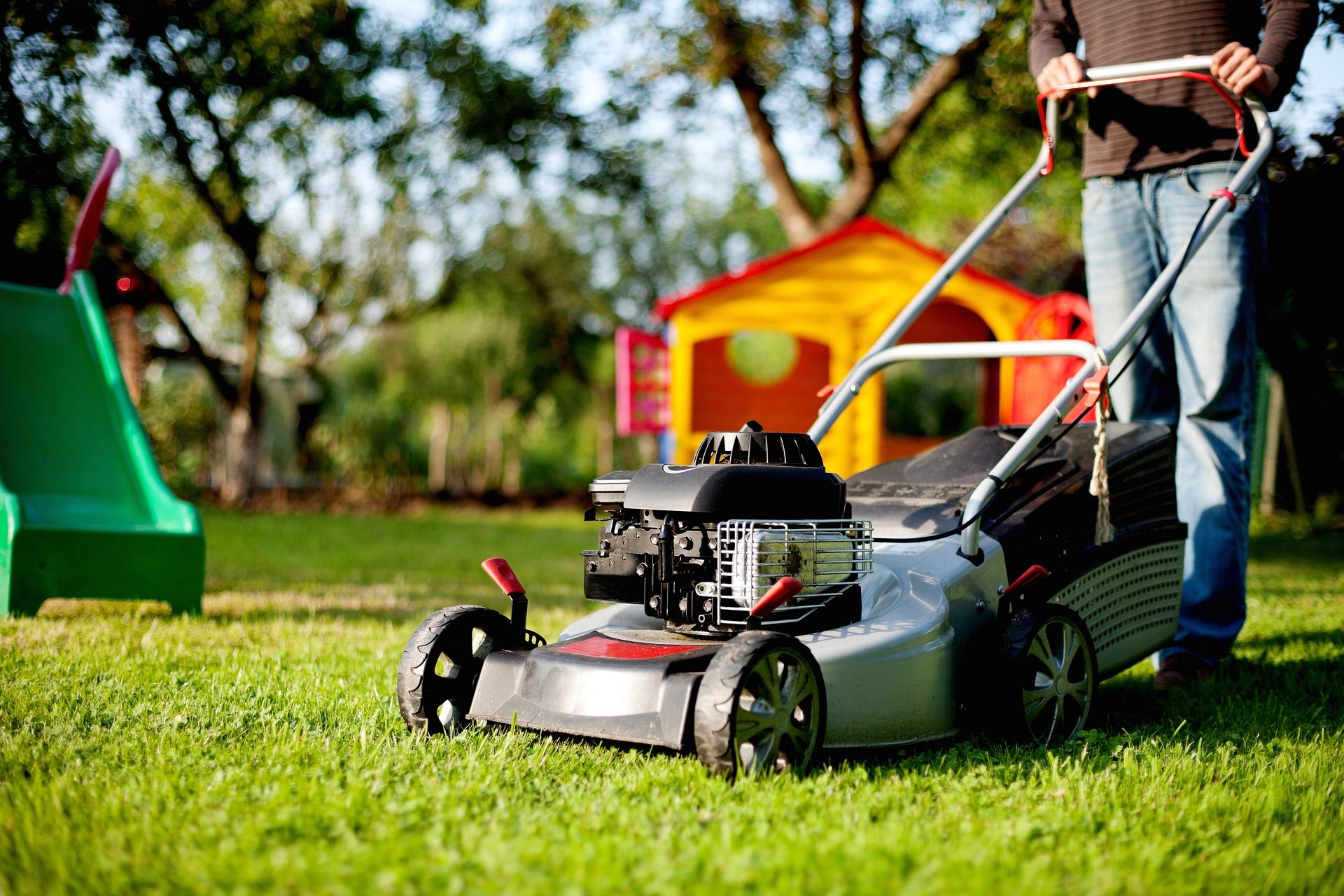Gardening aficionados and homeowners often look forward to the mowing season, ensuring their yards are trimmed to perfection. However, a common hurdle they face is when their trusty lawn mower refuses to roar to life.
If you've ever pondered, "Why won't my lawn mower start?" – this article is tailor-made for you. Here, we'll delve deep into the reasons behind this baffling issue and shed light on potential solutions.
1. Out of Fuel or Stale Fuel
It may sound obvious, but sometimes the simplest reasons are the culprits. If your lawn mower has been sitting idle for a while, the fuel may have evaporated, or it might have become stale, which makes it less combustible.
Solution: Always check the fuel levels before starting. If the fuel is old, drain the tank and refill it with fresh gasoline. Ideally, don't let gasoline sit for more than 30 days without use.
2. Dirty or Faulty Spark Plug
The spark plug is essential for igniting the fuel in the mower. A corroded, dirty, or faulty spark plug can prevent the mower from starting.
Solution: Clean off any debris from the spark plug. If it appears damaged or worn out, replace it. A new spark plug is relatively inexpensive and can make a world of difference.
3. Clogged Air Filter
A clean air filter ensures that your engine gets a steady, clean airflow. A clogged or dirty filter can choke the engine, preventing it from starting.
Solution: Check the air filter regularly. Clean or replace it if necessary. A rule of thumb is to replace the air filter every mowing season or after 25 hours of use, whichever comes first.
4. Old or Contaminated Oil
Like any other engine, your lawn mower needs oil to run smoothly. Over time, the oil can become dirty, or its level might be too low.
Solution: Check the oil level with the dipstick. If it's dark or gritty, it's time for an oil change. Ensure you use the recommended type of oil for your mower.
5. Faulty Carburetor
The carburetor is where the magic happens – it mixes air and fuel to generate combustion. If it's clogged or malfunctioning, it can halt the mower's operation.
Solution: Clean the carburetor using a carb cleaner. If the issue persists, you might need to rebuild or replace it.
6. Dead Battery (For Electric Mowers)
If you have an electric lawn mower, a dead or weak battery is a common reason it might not start.
Solution: Ensure the battery is charged. If it doesn't hold a charge, consider replacing the battery.
7. Blocked Fuel Line
A blockage in the fuel line can restrict gasoline flow to the engine.
Solution: Disconnect the fuel line and clean it thoroughly. If it seems damaged, it's a good idea to replace it.
8. Flywheel Key Damage
The flywheel key is a tiny metallic piece that aligns the flywheel correctly. If your mower has had a harsh impact (like hitting a rock), the flywheel key might break, protecting the engine from damage.
Solution: Inspect the flywheel key. If it's bent or broken, replace it to ensure proper alignment.
9. Starter Rope Issues
If the starter rope is frayed or has knots, it can prevent you from starting the mower effectively.
Solution: Examine the rope for any signs of wear and tear. If needed, replace it.
10. Water in the Fuel Tank
Water contamination in the fuel can prevent your lawn mower from starting.
Solution: Drain the fuel tank completely, let it dry, and then refill with fresh gasoline.
11. Operator Presence Control (OPC) System
Many modern lawn mowers come equipped with safety features like the OPC system. This ensures the mower doesn't start unless someone is in the operator's position.
Solution: Make sure you are holding down any required safety handles or levers when trying to start your mower. If the system is faulty, consult the mower's manual or a technician.
12. Throttle and Choke Position
For mowers with a manual choke, the choke and throttle positions play a crucial role in starting the mower, especially in colder conditions.
Solution: Ensure the throttle is set to the 'start' position. If your mower has a choke, make sure it's engaged before starting in cold conditions and disengaged once the engine warms up.
13. Valve Issues
Valves control the flow of the fuel and air mixture and the exhaust out of the combustion chamber. Incorrect valve spacing or a damaged valve can disrupt the engine's operations.
Solution: Adjust the valve clearances as per the mower’s manual. If you're unsure about the process or if the valves appear damaged, seek professional help.
14. Bad Ignition Coil
The ignition coil sends voltage to the spark plug while the engine is running. A faulty ignition coil will fail to provide the necessary spark to start the engine.
Solution: Check the ignition coil for signs of wear or damage. If suspect, it may need replacement. Use a spark plug tester to check if the coil is producing a spark.
15. Damaged Starter Motor (For Electric-Start Models)
If you have a mower with an electric starter and it's not turning over, the starter motor could be the problem.
Solution: Inspect the starter motor and solenoid. If they appear corroded or damaged, consider replacing them.
Essential Maintenance Tips
Spark plugs are the heart of your lawn mower's engine ignition system. A well-maintained spark plug ensures that your mower starts quickly, runs efficiently, and your lawn looks manicured to perfection. However, grass clippings, dirt, and debris can accumulate around the spark plug wire and other parts of the engine, causing it to run poorly or not start at all. Regularly checking and cleaning around the spark plugs, and replacing them when worn, can prevent a broken mower and save a trip to the repair shop.
A dirty air filter and clogged fuel filter are common issues that affect a mower's performance. The air filter, tasked with keeping dirt and debris out of the lawn mower's engine, can become clogged over time. Similarly, the fuel filter, positioned to catch impurities before they can reach the engine, can also become congested. Regularly checking and replacing these filters ensures that your mower is always ready for action, preventing frustrating delays when it’s time to tackle that overgrown grass.
In Summary
A non-starting lawn mower can be frustrating, but with a systematic approach, the cause can often be identified and resolved. Regular maintenance, such as cleaning and changing air filters, spark plugs, and oil, can prevent many of these issues from arising in the first place. Moreover, always storing your mower in a dry, protected space can help extend its life and reliability.
Finally, if you've tried multiple troubleshooting methods and still can't get your mower to start, it may be time to consult a lawn mower repair professional. They can provide a comprehensive inspection and ensure your equipment is ready for the season ahead.






